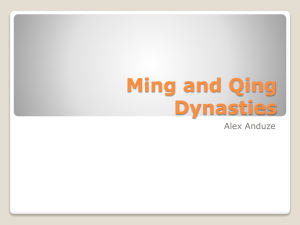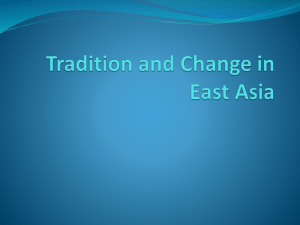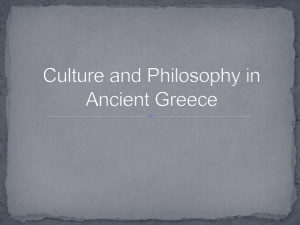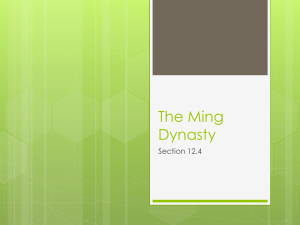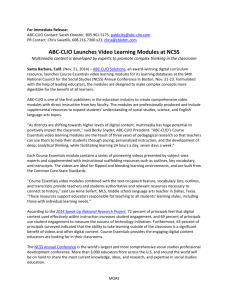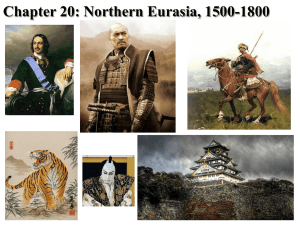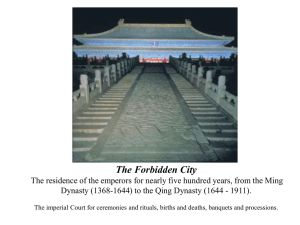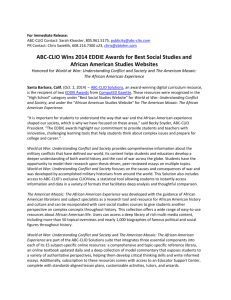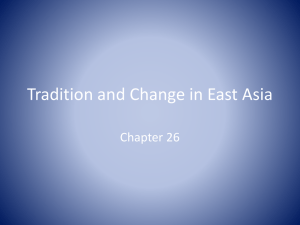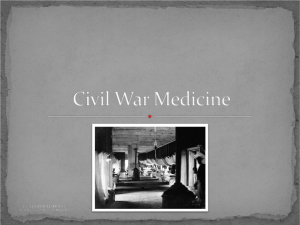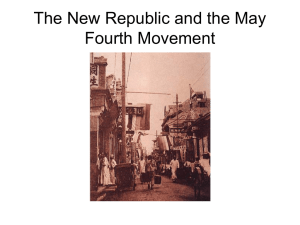Ming and Qing Dynasties in China
advertisement
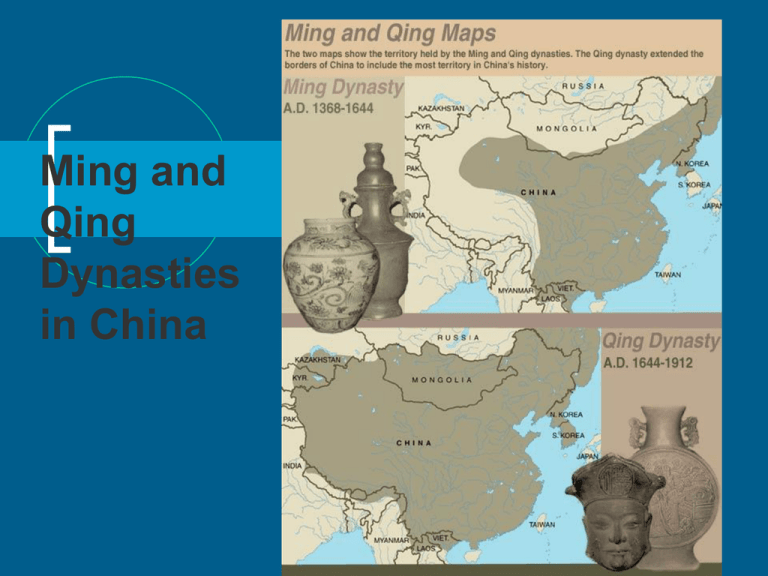
Ming and Qing Dynasties in China Ming Dynasty (1368-1644) Last native imperial dynasty Rose out of rebellion against the Mongols Some achievements: Naval expeditions began in 1405-1433 (Zheng He) New capital at Nanjing Ming porcelain Literature + philosophy flourished Forbidden City (commissioned by Yongle) Agricultural Revolution Crop rotation Irrigation pumps Nanjing was reforested with 50 million trees Zheng He’s Expeditions This Chinese woodblock print, probably from the early 17th century, depicts ships of Zheng He's expeditions. His voyages demonstrated both the advanced development of Chinese shipbuilding and navigation techniques and the general exuberance of the early Ming period. This era of exploration and expansionism slowed considerably with the death of the Yongle emperor in 1424. The Forbidden City The Forbidden City in Beijing, China is the largest palace complex in the world. It covers 183 acres and comprises 9,999 buildings. Commercial Revolution Urbanization Extensive trade with Europe but restricted the Europeans to coastal cities Traded actively with the Portuguese, the Dutch, and the Japanese, who traded silver for Chinese silks and porcelain Collapsed due to… Corruption in government and unrest among the larger population, invasion of the dynamic Manchus from the north Qing (1644-1911) Policies Manchus were 2% of the overall population Qing rulers sought both to maintain their ethnic distinctiveness Manchus were to cultivate horseback riding and archery skills and were discouraged to intermarry— while at the same time cultivating the image of a model Confucian monarch Jurchen, Mongols, Koreans, and Han Chinese—who joined the Manchu forces early all came to be known as "Manchu" and were accorded special privileges/obligations in the Qing Empire. Separate residential quarters in major cities Privileged access to official positions. Qing Architecture First Manchu imperial palace in Shenyang, Liaoning Province, China. Begun in 1624, 20 years before the Manchus captured Beijing and established the Qing Dynasty (1644–1911), this remained a second "Forbidden City" and secondary imperial palace even into the 20th century. Qing Dynasty (Manchus) (1644-1911) Conflict with Europe: “Ocean Devils” 17th-18th centuries 1793: English refused to perform rituals of obeisance to the emperor Relations continued to deteriorate Both sides think they were economically and culturally superior Eventually: Opium Wars (which China lost) and the Treaty of Nanjing (British got Hong Kong plus trading rights) Tokugawa Japan (1603-1836) Longest period of uninterrupted peace Japan ever enjoyed Hierarchical life 1. Samurai = warrior class Shogun (military dictator of Japan)= head of samurais 2. Farmers: Provided food but could not leave the land 3. Artisans: made goods or offered services used by the people in daily life activities 4. Merchants: Traded in goods and money Resources http://www.wsu.edu/~dee/TOKJAPAN/TOKJAPAN.HTM "Early Qing-dynasty architecture." Image. Alfred J. Andrea. World History: The Modern Era. ABC-CLIO, 2011. Web. 28 Feb. 2011. "Forbidden City, Beijing." Image. Dreamstime. World History: Ancient and Medieval Eras. ABC-CLIO, 2011. Web. 28 Feb. 2011. "Manchus." World History: The Modern Era. ABC-CLIO, 2011. Web. 28 Feb. 2011. "Ming dynasty." World History: The Modern Era. ABC-CLIO, 2011. Web. 28 Feb. 2011. "Ming dynasty." World History: Ancient and Medieval Eras. ABC-CLIO, 2011. Web. 28 Feb. 2011. "Ming and Qing (Visual)." World History: The Modern Era. ABC-CLIO, 2011. Web. 28 Feb. 2011. "Ming dynasty porcelain bottle." Image. World History: The Modern Era. ABC-CLIO, 2011. Web. 28 Feb. 2011. "Yongle." Image. Instructional Resources Corporation. World History: Ancient and Medieval Eras. ABC-CLIO, 2011. Web. 28 Feb. 2011. "Zheng He's fleet." Image. Instructional Resources Corporation. World History: Ancient and Medieval Eras. ABC-CLIO, 2011. Web. 28 Feb. 2011. "Zheng He." Image. Instructional Resources Corporation. World History: Ancient and Medieval Eras. ABC-CLIO, 2011. Web. 28 Feb. 2011.
